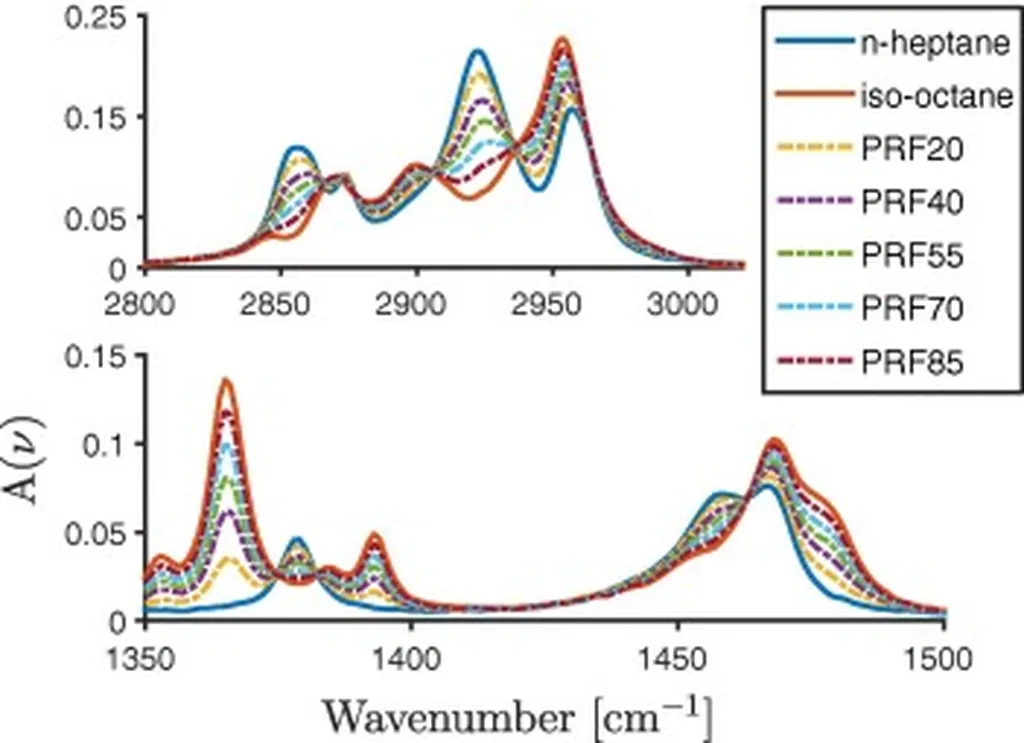In the realm of energy and fuel research, the determination of key metrics such as the Research Octane Number (RON) for gasoline has traditionally been a costly and time-intensive process. The standard Cooperative Fuel Research testing procedures, while accurate, can be cumbersome and expensive. However, a recent study published in the journal [insert journal name] offers a promising alternative approach that could streamline this process and provide significant benefits to the energy sector.
The study, titled “Predicting fuel research octane number using Fourier-transform infrared absorption spectra of neat hydrocarbons,” explores the use of multivariate statistical models to predict RON. The researchers found that by using Fourier-transform infrared (FTIR) absorbance spectra of neat hydrocarbons and their mixtures, they could construct an accurate statistical model for predicting the RON of gasoline and gasoline-like fuels.
The key to this approach lies in ensuring the representation of key functional groups in the spectroscopic data set used to train the model. The researchers initially used a principal component regression model for RON based on IR absorbance data from neat and 134 mixtures of n-heptane, isooctane, toluene, ethanol, methylcyclohexane, and 1-hexene. This model was then tested on 10 Coordinating Research Council Fuels for Advanced Combustion Engine (FACE) gasolines and 12 FACE gasoline blends with ethanol. The results were impressive, with the model predicting RON within an average error of 34.8+/-36.1 and a worst-case error of 51.2.
To further refine the model, the researchers added 28 additional minor components found in the FACE gasolines. They discovered that incorporating representatives of the branched alkane and aromatics classes was crucial for reducing model error. For instance, adding 2,3-dimethylpentane and xylene to the previous model significantly improved its accuracy, allowing it to predict RON for 22 target fuels within an average error of 0.3+/-4.4 and a worst-case error of 7.9.
One of the most notable aspects of this study is its innovative use of neat and surrogate fuels to create models that can predict the performance of complex, unknown fuels. This approach not only simplifies the process of characterizing liquid transportation fuels but also has the potential to reduce costs and time significantly.
The implications for the energy sector are substantial. By adopting this method, fuel manufacturers and researchers could expedite the development and testing of new fuel formulations. This could lead to more efficient and cost-effective production processes, as well as the ability to quickly assess the performance of novel fuel blends. Additionally, this approach could facilitate the integration of alternative and renewable fuels into the market by providing a rapid and reliable means of evaluating their performance.
In conclusion, the study presents a groundbreaking method for predicting the Research Octane Number of gasoline and gasoline-like fuels using FTIR absorbance spectra and multivariate statistical models. This innovative approach has the potential to revolutionize the way fuel metrics are characterized, offering significant benefits in terms of time, cost, and efficiency. As the energy sector continues to evolve, such advancements in research and technology will be crucial in meeting the growing demand for sustainable and high-performance transportation fuels.
This research was published on arXiv and can be read in full [here](http://arxiv.org/abs/1606.07122v1).

